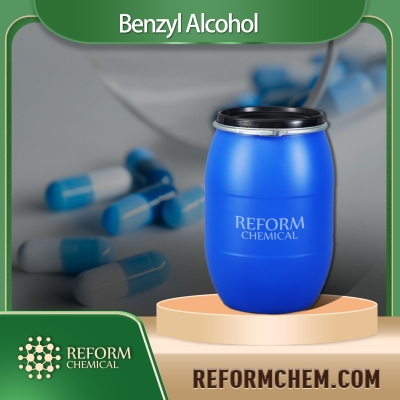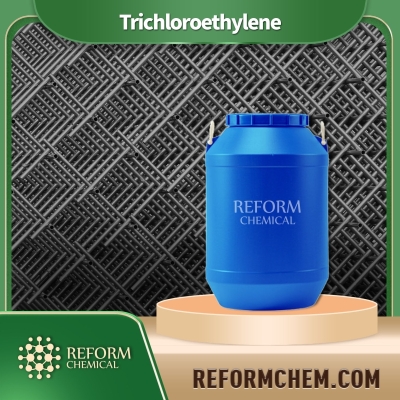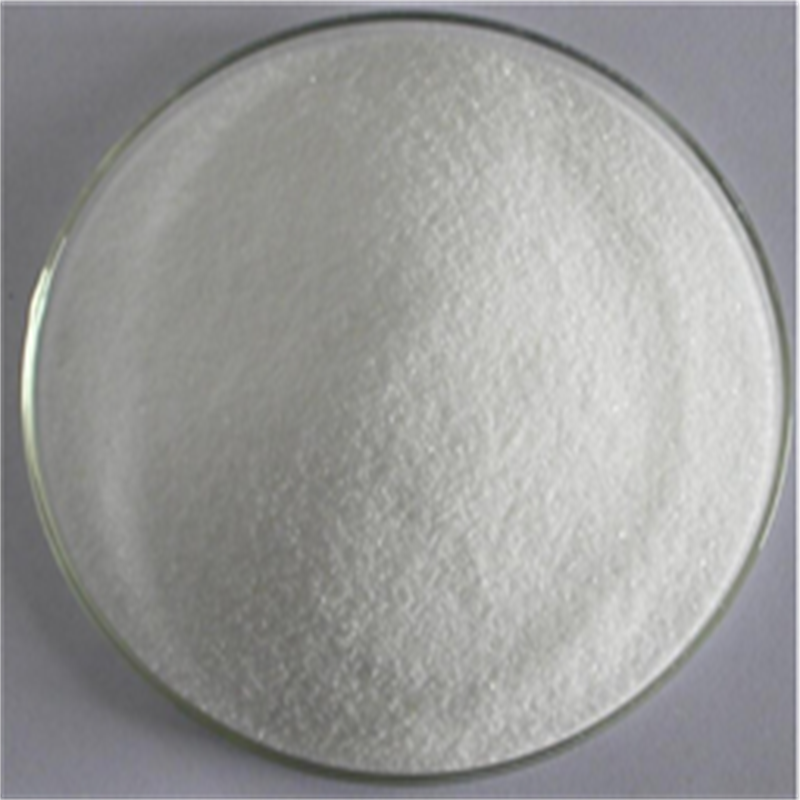A case of tumor syndrome aggravated in the whole tumor after the child's ecruleal isolation of large tumor
-
Last Update: 2020-06-21
-
Source: Internet
-
Author: User
Search more information of high quality chemicals, good prices and reliable suppliers, visit
www.echemi.com
The child, female, 5 years old, 13.5kg, ASAIVclass, was admitted to hospital for "coughing, finding a large left chest cavity for 1 week"Family members complain that their activity resistance is weaker than their peers, after the activity is short of breath, no heart palpitations, fainting historyAdmission: Body temperature 36.3 Degrees C, HR128 times/min, RR34 times/min, BP97/56mmHgBarrel-shaped chest, chest bone raisedLeft pulmonary speech fibrillation is enhanced, the diagnosis is solid, and the hearing breathing tone decreasesThe heart-throb beat situ is located in the middle line before the fifth rib level with a left 4.5 cm, the heart rhythm is aligned, and the valve area is unheard and murmuredChest-enhanced CT: large soft tissue lump shadow (11.1 cm x 9.1 cm) in the left chest cavity, unevenly reinforced, large area of left lung pressure, partial lung is not open, shifting to the rightLeft rear compartment huge occupant: neurogenic tumor? (Figure 1) Electrocardiogram: sinus heart rhythm, normal electrocardiogramLaboratory test: Norepinephrine 1914ng/L, Adrenaline 276ng/LYu did not see anyspecialIt is proposed to "divide the occupaic excision" in the whole hemp downstreamFigure 1 CT scan of the chest before surgeryThe child 13:30 by his mother into the operating room, HR120 times / minute, BP107/ 68mmHg, RR38 times / minute, SpO296%, quiet with oxygen absorption 5min after the line to retain the induced intubation of autonomous breathingInduced drugs: intravenous giving midazolam 1 mg, fentanyl 10 mg, gradually increasing the inhalation concentration of heptifluorite from 1% to 3%, 5min after 2% Lidoca 2 ml through the throat hemp tube to perform the throat surface anesthesia and cyclometaua puncture injectionSuccessfully insert the ID5.0mm trachea duct in a visual laryngoscope, with a depth of 16 cm, before the two-lung respiratory sound is intubated During surgery, the child's self-breathing, VT100 to 150 ml The adhesticomre tubes of the foot back and the central venous puncture tube were monitored for ABP and CVP, with initial values of 115/62mmHg and 11mmHg, respectively surgery 14:50, open the chest vein stake fentanyl 15 sg, the child's independent breathing stopped, hand-controlled ventilation under the airway pressure of 30 to 40mmHg, VT30 to 50 ml, SpO2 down to 90% Ask the surgeon to immediately disinfect the chest, the airway pressure is reduced, VT is restored to 117 ml, so it is converted to machine-controlled respiratory maintenance, the use of pressure-controlled synchronous intermittent instruction ventilation (SIMV-PCV) mode, set the suction pressure 20 cmH2O, support pressure 20 cmH2O, hoage pressure 4 cmH2O Try to interrupt autobreath with ambercholine 10mg after opening the chest, a child ABP drops to 55/32mmHg, CVP18mmHg, HR116 times/min, RR25 times/min, SpO2 drops again to 82%, considering Tumor collapse pressure to the heart and lungs, the surgeon was instructed to lift the tumor to relieve the pressure, the veins to remove norepinephrine 2 sg and with 0.1 g.kg-1-min-1 continuous pumping, ABP maintained at 90 to 110/50 to 70mmHg after SpO2 gradually recovered the surgeon raised the tumor with a hand brace, continued to carefully separate and remove, according to the ABP adjusted the norepinephrine pump speed in 0.1 to 0.3 sg kg-1 min-1 After the tumor is removed, The ABP quickly drops to 46/31mmHg, CVP9mmHg, HR103 times/min, immediately drops hydroxyethyl starch injection, intravenous lysine-free epinephrine 2?g, ABP continuously minimizes 39/28mmHg, Reveoperation intravenously with norepinephrine 2?g, epinephrine 5?g, sodium methylnylon amber at 20mg, ABP rebounded to 51/46mmHg, at this time VT185ml, RR22 times/min, SpO282% Adjust the breathing pressure of the ventilator 13 cmH2O, increase the norepinephrine pump speed of 0.3 to 0.5?g kg-1 min-1, joint pump injection epinephrine 0.1 to 0.3?g kg-1-min-1, and properly de-piped to 15 cm, ABP rose to 95/45mmHg, HR112 times/min, Sp2O 100/RR22 arterial blood indication: pH7.28, PCO2 42.2mmHg, PO2 165.4mmHg, HCO-3 19.4mmHg, BE-6.81mmol/L, Glu9.9m/L, Hb76.7g/L, Na-133mmol/L, K-4.13mmol/Lmol/L.L Because Hb is below normal, red blood cell suspension 2U is given Anesthesia a total of 300 ml of crystal fluid, colloid ale 200 ml, out of the room urine volume of 50 ml During the procedure, the tumor size is about 15 cm x 10 cm, pushing the left lung around, vertical and tight, and the chest wall, spine, aorta After the operation, the child's vital signs are stable, HR108 times / minute, ABP95/52mmHg, RR20/min, SpO2100%, hearing-ath-like double lung breathing sound thick, unheard and wet, with trachea catheters, pumps blood vessels active drugs into PICU children in the PICU monitoring indicators are basically normal, the first day after surgery to stop vascular active drugs and tube extraction, and then transferred back to the general ward and recovered discharge Day 4 after surgery to go to norepinephrine 460 ng/L, adrenaline 111 ng/L Review the chest tablets to see the left lung resuscitation is good Postoperative pathology: thysal cell neuroblastoma discussion currently have no uniform definition of large tumors, and most studies have criteria for tumors that affect multiple vertical areas or occupy more than two-thirds of the chest cavity on one side Periage tumor syndrome (mediastinal mass syndrome, MMS) refers to a series of manifestations of pressure on large blood vessels in the heart and lungs caused by the septum, such as coughing, wheezing, breathing difficulties, fainting, chilli, arrhythmia and even cardiac arrest, the symptoms vary in severity and rapid lying This case of tumor occupies the left chest cavity far more than 2/3, should be diagnosis for the large tumor ; Referring to the adult MMS risk stratification, its reclining position without obvious symptoms, hemodynamics basically stable, chest CT show respiratory pressure level of 50%, the risk of surgery "inaccurate" In order to reduce the risk of tumor spressing the heart and lungs from above when side resting, the back rest ingeposition is chosen as the surgical position The large tumor can compress the lung tissue and respiratory tract, affect the whole body oxygenarosis, the management of the airways is a major focus of this type of surgical anesthesia On the one hand, muscle loose medicine can reduce muscle tone and aggravate the pressure of the lump on the respiratory tract, on the other hand, autorespiratory inhibition due to excessive pressure in the chest can cause positive pressure ventilation difficulties, so it is recommended to light sedation, maintain autonomous breathing slow-induced intubation or wakeful intubation Although lung isolation, the implementation of single lung ventilation is theoretically more conducive to surgical operation, but this case of tumor occupies most of the left chest cavity, left lung large area pressure is not open, single lung ventilation is not significant Because the child into the room to breathe air when SpO2 is 96%, preoperative lung function damage has been reflected, considering its age and psychological tolerance, in sedation, analgesia, surface anesthesia to retain independent breathing, slow induction to complete a single cavity tube intubation After opening the chest to strengthen the analgesic to give fentanyl, the child developed respiratory inhibition, control ventilation difficulties, consider for the chest pressure is too high and the cross lung pressure difference is too low caused Surgeons quickly open the chest, reduce chest pressure, ventilation difficulties are alleviated, but also confirmour our inference experience of this case suggests that surgeons should wait at the bed from anaesthetic induction, ready to open their chests and de-stress, and immediately give naloxone or nalmetinanane respiratory suppression if they are not ready We have had children with palsy who successfully resume disain-self-breathing in this way and alleviated ventilation difficulties In this case, in order to reduce abnormal breathing and vertical swing, try to give short-acting muscle loosening medicine, immediately lead to MMS aggravation, showing respiratory disorders, SpO2 reduction and severe hypotension, may be related to tumor collapse directly compressing the lungs and large blood vessels of the heart Surgeons immediately lift the tumor to reduce stress, while using vascular active drugs to support circulatory function, to pass the dangerous period occur in such severe MMS in the field of large tumors, if not treated in a timely or inappropriate manner, a cardiac arrest may occur The lesson from this is that muscle relaxing medicine should not be easily used even after opening the chest, and adjustable ventilators for SIMV-PCV mode-assisted ventilation when autonomous breathing does not provide perfect oxygenation Due to long-term pressure of the left lung, increased vascular permeability, reduced surface active substances of the lungs, large surface tension, after the removal of the tumor may appear acute resevernal pulmonary edema, the use of CVP in the process of control the amount of infusion and infusion speed, while the appropriate use of a small amount of glucocorticoids to prevention In addition, the appropriate delay in pulling the tube after surgery can fight for a certain amount of time for the recovery function of pressurized lung tissue and respiratory tract, and play a protective role this case was diagnosed as a thoracic neuroblastoma, preoperative blood catanosis level serotonin level saline has a certain increase, although the removal of tumor process ABP did not significantly increase, but after tumor removal ABP significantly reduced, may be related to the reduction of catanocinol Therefore, the management of vascular active drugs in , ABP and CVP monitoring is necessary in summary, the child's huge septum tumor before surgery may not be obvious MMS symptoms, but during anesthesia there is an aggravating risk of the disease, need to be properly coped For high-risk MMS with obvious symptoms of preoperative cardiopulmonary compression, it is necessary to expose femtomy veins in advance, and immediately intubate in emergency to perform cardiopulmonary reflux This method is widely used in the treatment of pre-interval tumors, but has also been reported in the post-interval tumor
This article is an English version of an article which is originally in the Chinese language on echemi.com and is provided for information purposes only.
This website makes no representation or warranty of any kind, either expressed or implied, as to the accuracy, completeness ownership or reliability of
the article or any translations thereof. If you have any concerns or complaints relating to the article, please send an email, providing a detailed
description of the concern or complaint, to
service@echemi.com. A staff member will contact you within 5 working days. Once verified, infringing content
will be removed immediately.







